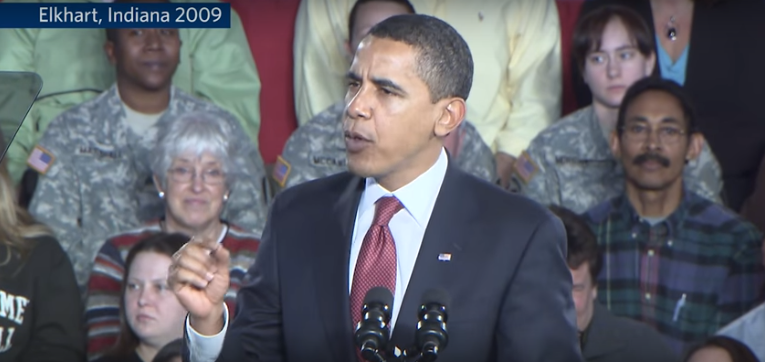
While the president deserves credit for some manufacturing job growth, problems remain.
President Obama is headed to Elkhart, Ind., today to tout the economic progress the country has made since the Great Recession, including manufacturing job growth.
The trip is the type of visit that presidents tend to make toward the end of their terms, when much of the media attention has shifted to the next election. Obama is looking to define his legacy, and he wants economic growth, including in manufacturing, to be part of that legacy. It’s also likely he’s trying to make sure the next president doesn’t do anything to completely muddle the process he’s made.
The story of Elkhart provides a nice narrative.
Elkhart is the first city Obama visited as president. When he traveled there in February 2009, Elkhart was in bad shape. The unemployment rate hovered around 20 percent, and as the president himself recalled, the city was “shedding jobs at an alarming speed – and hardworking families were losing their homes and health care along with those jobs.”
The Obama administration took action via the American Recovery and Reinvestment Act of 2009, more commonly known as the Stimulus or The Recovery Act. The No. 1 goal of that legislation was to save and create jobs, including in manufacturing.
And Obama kept his eye on the Indiana town. He returned to Elkhart several more times — today’s visit is his fifth time in the city.
More than seven years since that initial stop, there is no doubt that Elkhart is in better shape. As Obama tells it, Elkhart’s unemployment rate is lower, nearly all of the manufacturing jobs have come back, and Elkhart shows “America has recovered from crisis and we’re on the cusp of resurgence.”
In reality, things are a bit more complicated, as Rakesh Kochhar, a researcher at the Pew Research Center, recently told the PBS Newshour.
Kochhar found that 19,000 of the 24,000 manufacturing jobs lost in the recession returned to the Elkhart region. The unemployment rate is below 5 percent (compared to 22 percent in March 2009). All good things. But when Kochhar looked at the data a little more, he found that median household income is far lower now than it was before the recession hit — it dropped from $65,527 to $57,818.
And while many manufacturing jobs have returned to Elkhart, down the road in Huntington or Gary, things aren’t looking so great. There’s the infamous case of Carrier, whose parent company is offshoring 2,100 jobs to Mexico from plants in Indianapolis and Huntington. Indiana’s steel industry also is reeling from the steel imports crisis — hundreds of workers have been hit with layoff notices in nearby Gary, for example.
The story of manufacturing is also a mixed bag on a national scale. There have been 337,000 new manufacturing jobs created since January 2013. But that’s far below Obama’s goal of creating 1 million new manufacturing jobs in his second term, and factory job growth has stagnated over the past year.
So what will Obama’s manufacturing legacy actually be?
Obama does deserve credit for the Stimulus. It did indeed save and create jobs, especially in manufacturing. He also deserves far more credit for the success of the auto rescue, given that the auto industry has been one of the American manufacturing bright spots in recent years.
And although he’s nearing the end of his term, Obama still can take action to encourage factory job growth. For one, he can address the steel imports crisis by strongly enforcing our trade laws. It also will be up to his administration to maintain China’s non-market economy status.
But overall, manufacturing as a whole continues to struggle and the recovery of towns like Elkhart remains very fragile. Time — and the actions of the next president — will ultimately determine Obama's legacy.
